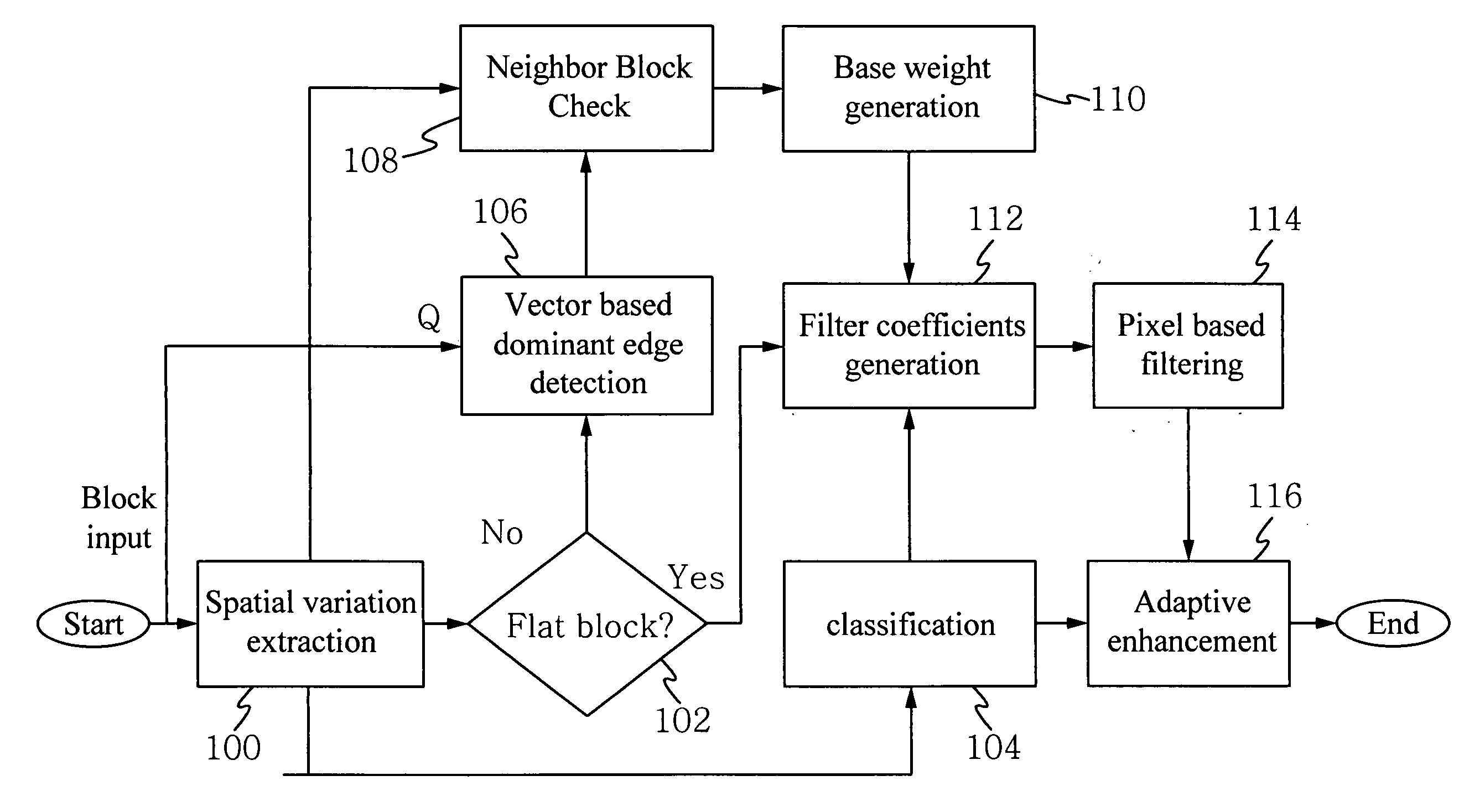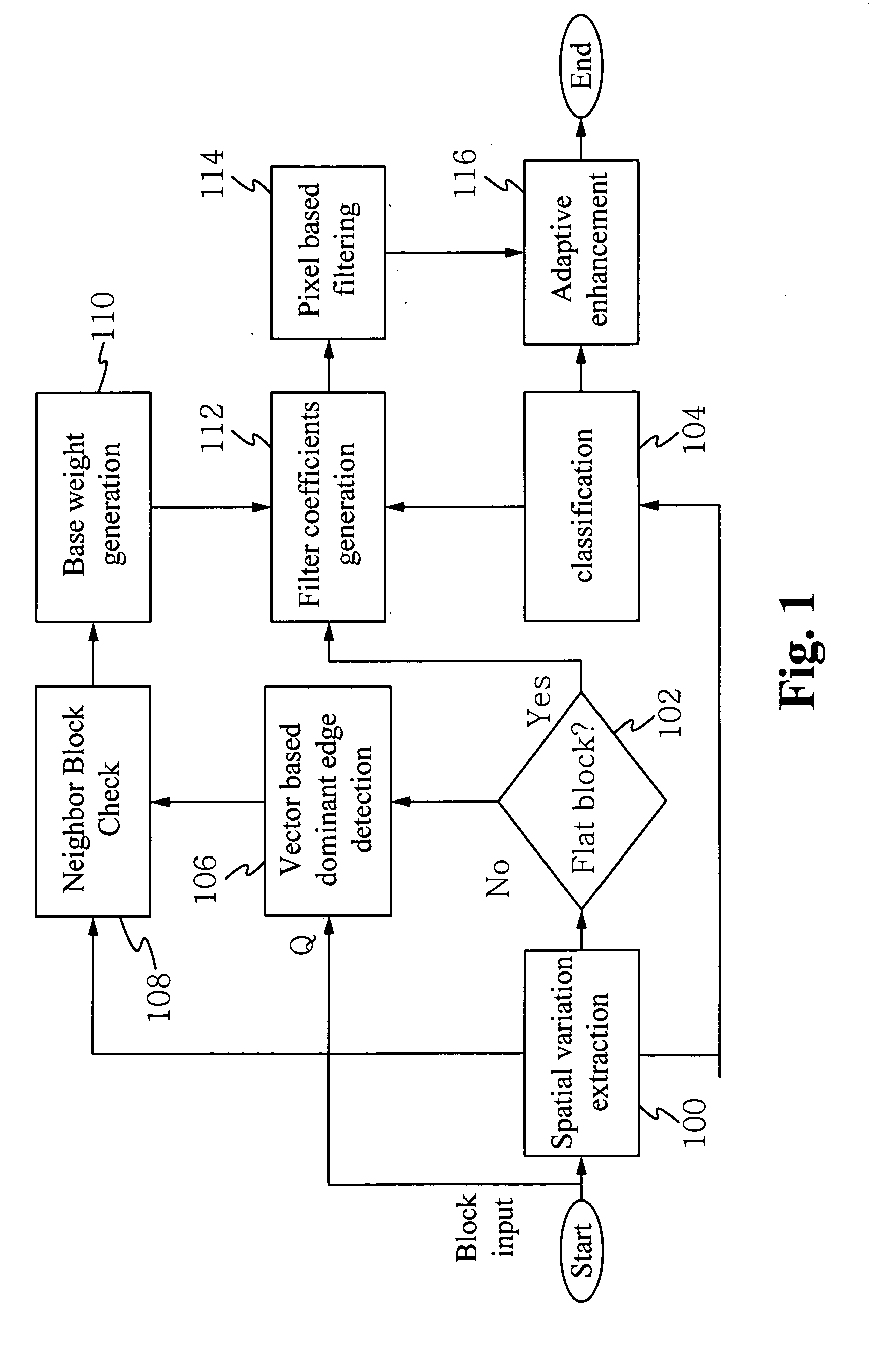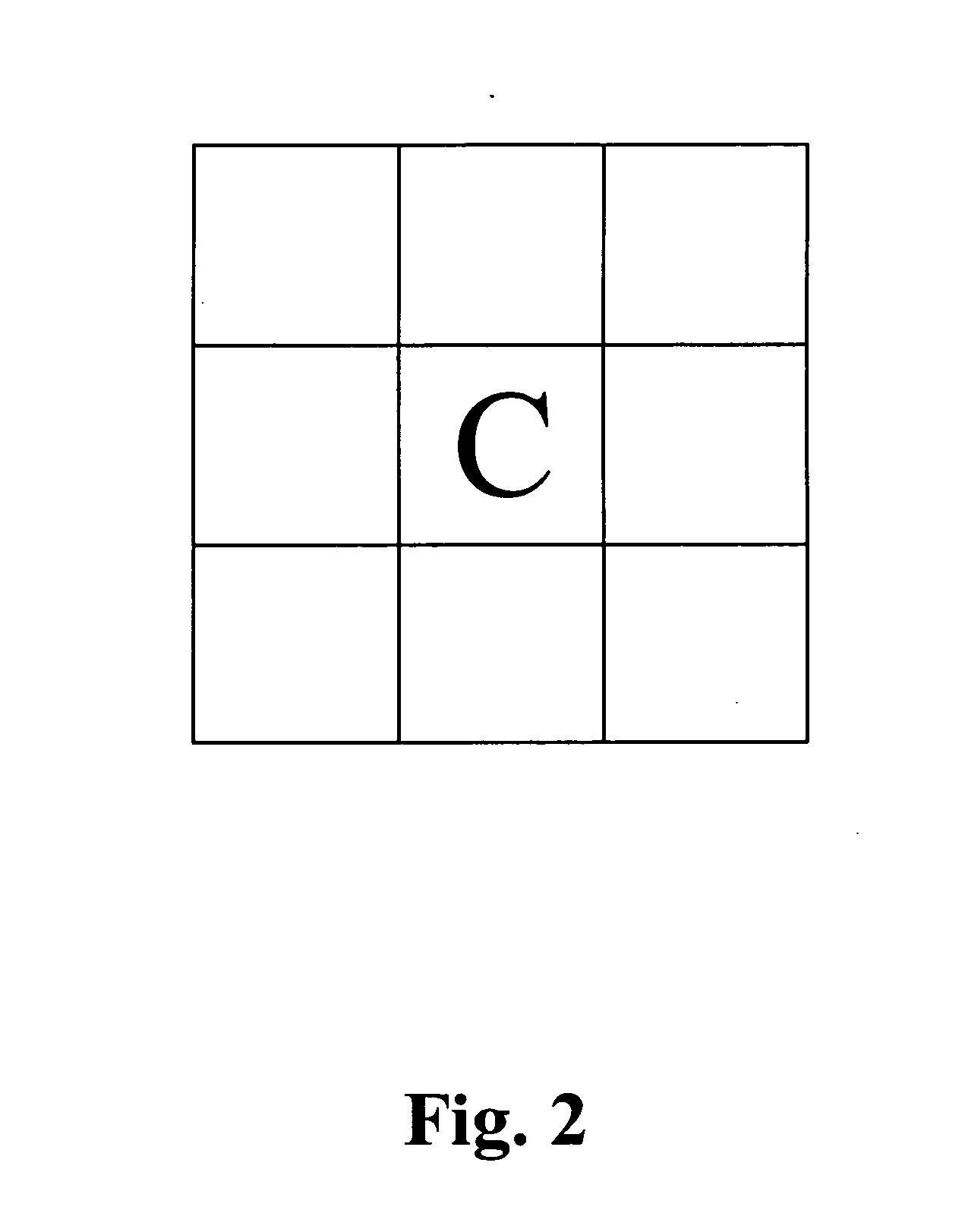System and method for image and video encoding artifacts reduction and quality improvement
a technology of image and video encoding and artifact reduction, applied in the field of image/video processing, can solve the problems of affecting the quality of new digital hdtv, and generating perceptual annoying artifacts, so as to improve image quality, reduce artifacts, and preserve natural edge smoothness and sharpness
- Summary
- Abstract
- Description
- Claims
- Application Information
AI Technical Summary
Benefits of technology
Problems solved by technology
Method used
Image
Examples
Embodiment Construction
[0018]A low complexity encoding artifacts reduction method to generate image and video with high quality is described herein. Unlike prior art methods that perform artifact reduction and sharpness enhancement separately, the two tasks are able to be accomplished in one pass. First, the current block is detected as a flat block or a texture / edge block. For the texture / edge blocks, a vector-based dominant edge detection and pixel intensity classification is combined to determine the coefficients of a 3×3 filter for each pixel in the current block. For the flat block, the filter coefficients are only determined by the intensity difference between the current pixel and its neighbor pixels. The obtained filter is then applied to this pixel to remove the quantization noise including the ringing noise. After the filtering, an adaptive enhancement is applied. By using the information obtained during the filtering process, only the natural edge and texture are enhanced. As a result, better v...
PUM
 Login to View More
Login to View More Abstract
Description
Claims
Application Information
 Login to View More
Login to View More - R&D
- Intellectual Property
- Life Sciences
- Materials
- Tech Scout
- Unparalleled Data Quality
- Higher Quality Content
- 60% Fewer Hallucinations
Browse by: Latest US Patents, China's latest patents, Technical Efficacy Thesaurus, Application Domain, Technology Topic, Popular Technical Reports.
© 2025 PatSnap. All rights reserved.Legal|Privacy policy|Modern Slavery Act Transparency Statement|Sitemap|About US| Contact US: help@patsnap.com



